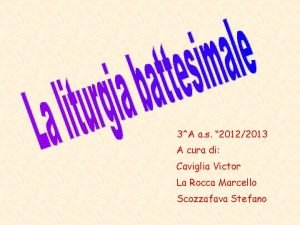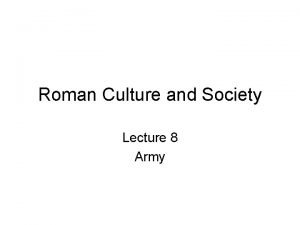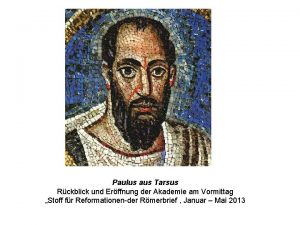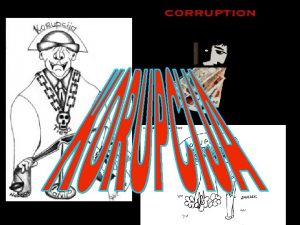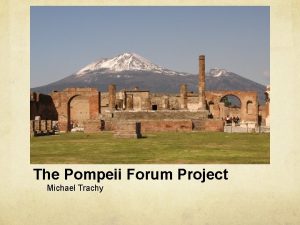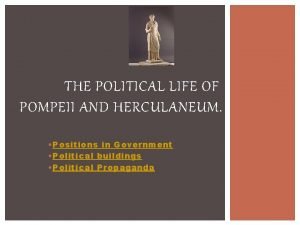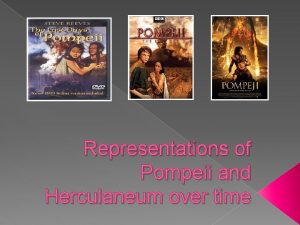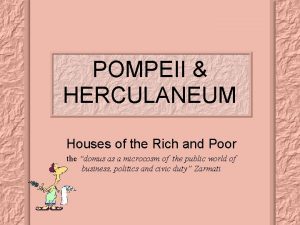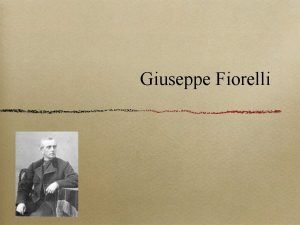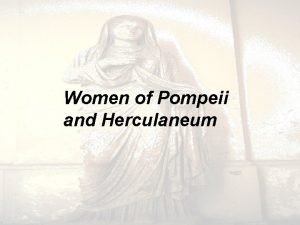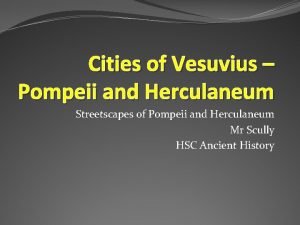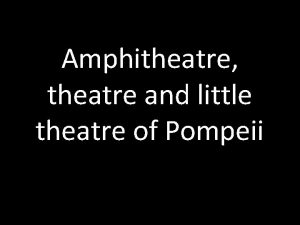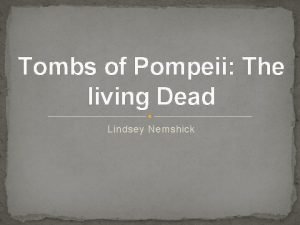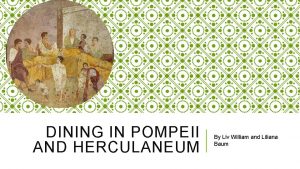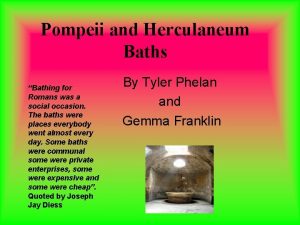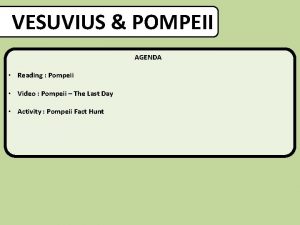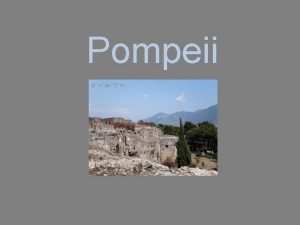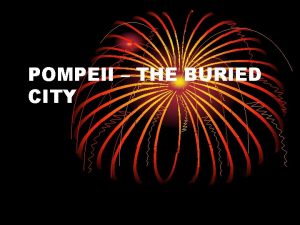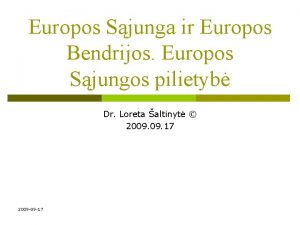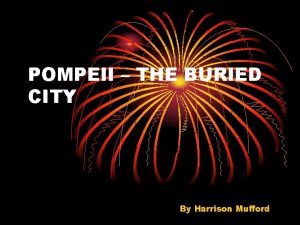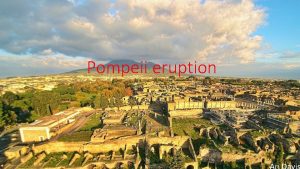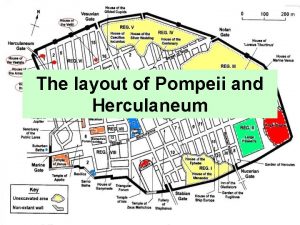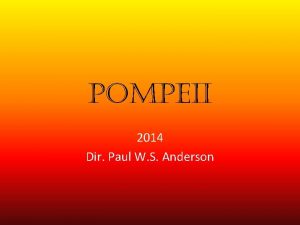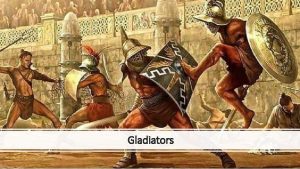Case Study I Dura Europos The Pompeii of
































- Slides: 32

Case Study I: Dura Europos (“The Pompeii of the East”)

Coin of Queen Boran (Daughter of Khosrow II), r. 629 -630 CE Hatshepsut, Metropolitan Museum of Art, c. 1503 -1482 BCE Coin of Queen Azarmidhkt, (Daughter of Khosrow II), r. 630 -631 CE

Coin of Constantine, c. 313 CE Coin of Heraclius, c. 628 CE

San Vitale, Ravenna, 6 th c. CE Hosios Loukas, Greece, 11 th c. CE Ardashir’s palace, Firuzabad, 3 rd c. CE


Hagia Sophia, Istanbul (Constantinople), 6 th c. CE Pendentive

Why Dura Europos? • A diachronic slice (Seleucid, Parthian, Roman, Sasanian) • Non-imperial city—art IN the empire vs. art OF the empire (Colburn) • Uncommon glimpse into lives of regular individuals – Mingling of religions: Christian, Jewish, Pagan – At least 9 different languages attested (including Middle Persian, Aramaic, Greek, Palmyrene, Latin) – Difficulties of reconstructing ancient identity

The Problem of Defining ‘Parthian Art’: Parthian Art OF Empire/Art IN Empire

City’s Chronology • Seleucid city: founded by Seleucus Nicator c. 300 BCE (named Europos) • 2 nd c. BCE Parthians capture the city (made into fortress—Dura=“the fortress”) • mid 2 nd c. CE captured by Romans—frontier town: most preserved remains from this last phase of occupation • Destroyed by Sasanian siege in 256 CE— evidence for chemical warfare near Tower 19: Sasanians attempting to breach wall


Wall Paintings preserved by ramparts




The Gad (Fortune) of Dura, Temple of the Gad, c. 159 CE, Palmyrene limestone Palmyrene text below (center) reads: "The Gad of Dura; made by Hairan bar Mliku bar Nasor, in the month Nisan, the year 470 (AD 159)". Below (right): "Selecus Nicator"


Second commandment: “Thou shalt not make unto thee any graven image, or any likeness [of any thing] that [is] in heaven above, or that [is] in the earth beneath, or that [is] in the water under the earth…”


This house was built in the year 556 (in the Seleucid Era), this corresponding to the second year of Philip Julius Caesar (AD 244/245); in the eldership of the priest Samuel son of Yeda'ya, the Archon. Now those who stood in charge of this work were: Abram the Treasurer, and Samuel son of Sapharah, and. . . the proselyte. With a willing spirit they (began to build) in the fify-sixth year; and they sent. . . and they made hast. . and they labored in. . a blessing from the elders and from all the children of. . . they labored and toiled. . Peace to them, and to their wives and children all.

Exodus and Crossing the Red Sea Elijah revives the widow’s child Middle Persian Graffito: “When Hormizd the scribe came and he looked at the pictures…living…the dead…”



Earliest/best preserved domus ecclesiae (House of the Church)

Drawings after the paintings on the north wall of the baptistery: New Testament scenes







Temple of the Palmyrene Gods/Temple of Bel

Fresco of Julius Terentius performing sacrifice abecedaria
 Dura europos domus ecclesiae affreschi
Dura europos domus ecclesiae affreschi Domus ecclesiae rinvenuta a dura europos
Domus ecclesiae rinvenuta a dura europos Dura-europos
Dura-europos Theravada buddhism beliefs
Theravada buddhism beliefs Hauskirche dura europos
Hauskirche dura europos Obliti privatorum publica curate značenje
Obliti privatorum publica curate značenje Europos regioninės plėtros fondas
Europos regioninės plėtros fondas Ar turkija europos sajungoje
Ar turkija europos sajungoje Best worst and average case
Best worst and average case Project failure case study
Project failure case study Roman concrete
Roman concrete Pompeii forum project
Pompeii forum project Comitium pompeii
Comitium pompeii Representations of pompeii and herculaneum over time
Representations of pompeii and herculaneum over time Pompeii house plan
Pompeii house plan Giuseppe fiorelli pompeii excavation
Giuseppe fiorelli pompeii excavation Kleinste vulkaan ter wereld
Kleinste vulkaan ter wereld Women in pompeii
Women in pompeii Why did bimbo bite tito
Why did bimbo bite tito Pompeii gates
Pompeii gates Pompeii and herculaneum source booklet
Pompeii and herculaneum source booklet Pompeii tectonic plates
Pompeii tectonic plates Story elements flipbook
Story elements flipbook Faciatis
Faciatis Amphitheatre theatre
Amphitheatre theatre Pompeii's living dead
Pompeii's living dead Peristyle garden
Peristyle garden Basilica town
Basilica town Food and dining in pompeii and herculaneum
Food and dining in pompeii and herculaneum Muleteer pompeii
Muleteer pompeii Herculaneum baths
Herculaneum baths Sodyum
Sodyum Cuantos tiempos tiene un silencio de negra
Cuantos tiempos tiene un silencio de negra

